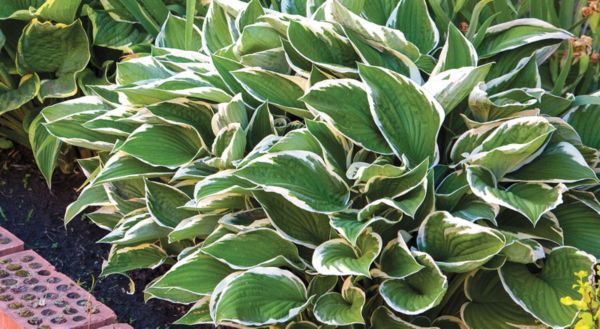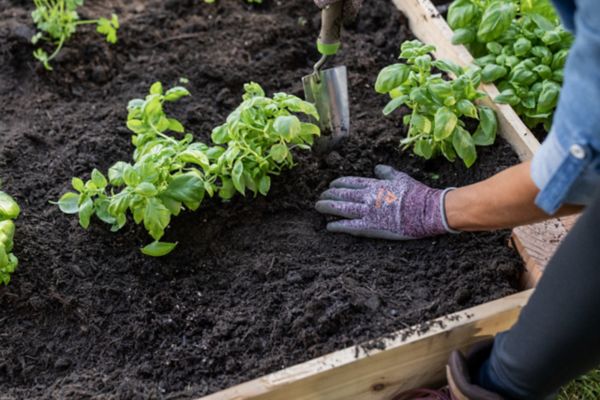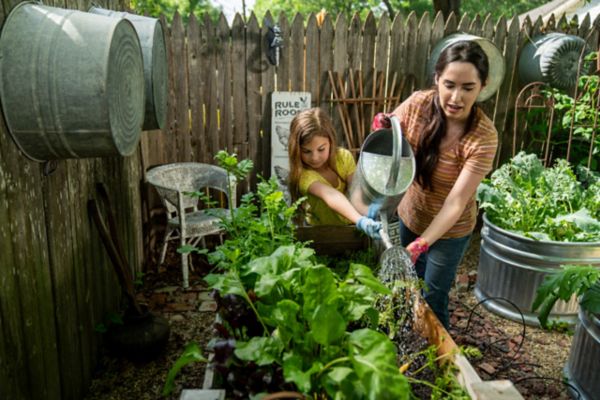How to Grow Butterfly Bush
Authored by Leah Chester-Davis
“Butterfly magnet” is one of the descriptions for butterfly bush, and no wonder! This woody shrub exhibits delightful and colorful blooms that are a rich nectar source in the summer months, attracting butterflies and other beneficial insects and pollinators like hummingbirds. The scientific name is Buddleja davidii and sometimes you will hear people refer to it as simply Buddleia (say bud lee uh), which is an alternative spelling. No matter how it is spelled, this is a popular, deciduous shrub that is a fast grower.
Butterfly bush has attractive grayish or silvery green to dark green foliage that grows in an open, arching form. There is even a variegated butterfly bush, ‘Summer Skies’, that is quite attention-getting. Unlike many other shrubs, the foliage, which appears as opposite leaves that are oblong, typically does not change color in the fall. Perhaps the plant earned the nickname as the summer lilac for its small lavender to purple blooms that appear on 4- to 10-inch fragrant panicles. It is also available with white, pink, and yellow blooms, depending on the cultivar. Some cultivars are close to red in color, such as ‘Miss Molly’, which grows to about 5 feet tall.
The individual tubular flowers are small, but they are clustered together to create large cone shapes that either stand upright or arch or nod, depending on the cultivar. The blooms typically cover the plant from spring through summer and into fall. When established, it tolerates drought conditions well.
About butterfly bush
| Botanical name: | Buddleja davidii; sometimes spelled Buddleia |
| Common name: | Butterfly bush, sometimes called summer lilac |
| Plant type: | Deciduous woody shrub |
| Size: | ranges from 5 to 10 feet high and 4 to 10 feet wide; dwarf varieties 2 to 3 feet |
| Sun exposure: | Full sun |
| Soil type: | Average, well-drained |
| Soil pH: | 6.0 to 8.0 |
| Hardiness zones: | 5 to 9 |
| Average first frost: | Varies by region |
| Average last frost: | Varies by region |
| Container friendly: | Yes, if dwarf variety |
| Beginner friendly: | Yes |
While this is a beautiful plant and highly desirable for many, some states now list it as invasive because it has escaped cultivation. However, according to the North American Butterfly Association (NABA), this serious charge is not universal. NABA shares that Monarch Watch, the Monarch Migration Research Station at the University of Kansas, uses and promotes butterfly bush without invasive incidents. Before planting, check with your state about whether it is on the invasive list. There are some varieties, such as ‘Miss Molly’ and her sisters ‘Miss Ruby’ and ‘Miss Violet’ that are noted as non-invasive and may even be approved for sale in states where other varieties are listed as invasive. They may be labeled “summer lilac.”
Growing

Butterfly bush thrives in full sun, at least 8 hours per day. It can tolerate part sun, but it may not bloom as prolifically and may not attract as many butterflies as it would in a warm location. It grows in many soil types if well-drained. It will not be happy in wet areas in the landscape, which will likely result in root rot. Avoid low, boggy areas and do not locate where a sprinkler keeps the ground saturated. The pH level is best around 6.0 to 7.0. In colder climates, it may die back to the ground when temperatures dip but typically resprouts in the spring.
Compact and dwarf varities
The Pugster series is available in several color options such as blue, periwinkle, pink, and white. They are compact plants, growing to only about 2 feet tall and 2 to 3 feet wide. Even though they are compact, the blooms are quite large. The plant has strong, thick stems, which is noted as a favorable characteristic to withstand cold conditions in zone 5.
Lo & Behold ‘Blue Chip’ was one of the earliest dwarf butterfly bushes and now Lo & Behold ‘Blue Chip Jr.’ is quite popular. It blooms before other buddleias and goes strong through the summer. The Lo & Behold series also presents many color choices. The Flutterby Petite Series is another choice. Dwarf varieties have many uses, from border and edging plants, to containers, to planting in masses for a striking display in the landscape, or even as a groundcover. They may be small, but they will reward with big blooms. No deadheading is needed to keep them looking their best and producing fragrant, colorful blooms that will make you smile every time you view them.
Planting

Before planting, decide whether you want to grow butterfly bush as a specimen plant in the landscape or whether to include it in a mixed shrub border or butterfly garden. It is beautiful as a backdrop to perennial gardens. Consider your space. Butterfly bush can grow quite large. A popular cultivar, ‘Black Knight’, grows 6 to 8 feet tall and 4 to 6 feet wide. Fortunately, dwarf and semi-dwarf varieties are available and are more suitable for smaller spaces.
The best time to plant is the spring, which gives it time to get established before cold weather. Plant butterfly bush high, particularly in heavy soils like clay. Unlike many other plants, the base must sit a bit higher than the ground. This helps facilitate good drainage, which is essential. There is no need to amend the soil. Rather, plant directly into the natural soil.
When planting a compact variety in a container, make sure the container has large drainage holes. Use a well-drained potting mix. Avoid mulching around the plant. This plant likes dry conditions and may not be happy with the amount of moisture that mulch can hold. In colder climates, some protection from winter winds and cold, damp conditions is important. Iowa State Extension recommends mounding a few inches of soil around the base of each plant to help protect the crowns.
Fertilizing
Butterfly bushes are light feeders and do not need a lot of fertilizer. Fertilize in the spring with fertilizer for flowering shrubs. Follow label directions.
Controlling Pests, Diseases, and Other Problems
This plant typically does not have a lot of diseases or insect problems. During hot, dry spells, spider mites might be a problem. They usually are found on the undersides of the leaves. If needed, spray a stream of water to dislodge them but do not use chemicals that will harm beneficial insects that visit the plant. It is best to spray with water early in the day to allow the plant to dry before nightfall to help prevent any fungal diseases.
The blooms are so beautiful you may be tempted to cut them for a flower arrangement. That’s your choice but they do not hold up well. For a short-lived arrangement, cut early in the morning and immediately place in water. The best bet for enjoying the blooms is to leave them on the plant.
Expert Tips

- Butterfly bush blooms on new growth. Blooming is usually enhanced by pruning the plant to within one foot of the ground in the spring. Avoid pruning during the fall or winter which can increase the chances of cold damage.
- Butterfly bush shows beautiful foliage and blooms, is heat tolerant, attracts pollinators to the garden, and is resistant to deer.
- Numerous varieties are available. Consider your space and check the plant tag for information on size. The plant grows to full size quickly.
- Butterfly bush sometimes elicits conversations, with contrasting views on whether this is a worthwhile plant in the garden. The plant, which originates in Asia, is favored for its colorful blooms and foliage and its ability to attract butterflies. On the other hand, in some regions, it is considered invasive, which means it may crowd out native vegetation. If this is a plant that you are interested in adding to your landscape, it is worth checking the invasive list for your state and whether there are any sterile cultivars that are acceptable for your area. Other than that, unless you grow only native plants in your garden, butterfly bush is a great plant to consider. Plant it in a sunny location with a sitting area nearby so you can enjoy the butterfly activity on a bright afternoon.
Frequently asked questions
Do I need to deadhead the blooms?
Deadheading, or removing the flower clusters, is up to you. General guidelines are that it will help improve flower production but there have been plenty of times I didn’t have the time to deadhead, and the plant kept on blooming throughout the season. If you deadhead, snip off the blooms below the long arching flower stalk. That will certainly help tidy up the appearance of the plant. Plant tags on many of the new varieties, which do not produce seed, note that deadheading is not needed.
My butterfly bush seems to leaf out much later than other shrubs; is this normal?
Yes! Butterfly bushes are among the last plants to leaf out in spring so be patient and give it time. Most bloom in mid-summer, though ‘Blue Chip Jr.’ is an early bloomer.
Why are sterile varieties recommended?
Sterile or seedless varieties typically do not spread or become invasive. For states that include butterfly bush on its invasive list, sterile varieties may be acceptable.
When is the best time to prune?
Prune butterfly bush in early spring when you see green buds on the stems. Prune them just above where leaf buds have formed. Buddleia can be a little slow in budding out in the spring so be patient and don’t assume the plant is dead if it is slow to leaf out. Even though you may want to tidy up in the fall, avoid pruning the plant back then, which can make It more susceptible to winter damage.
Do I need to prune my dwarf butterfly bush?
Yes, even the compact or dwarf forms benefit from a light pruning in the spring.
Is butterfly bush the same as butterfly weed?
No, these are two very different plants. Butterfly bush is a woody shrub. Butterfly weed is a species of milkweed (Asclepias sp.) which is an herbaceous perennial. It, too, is an incredible butterfly magnet.






